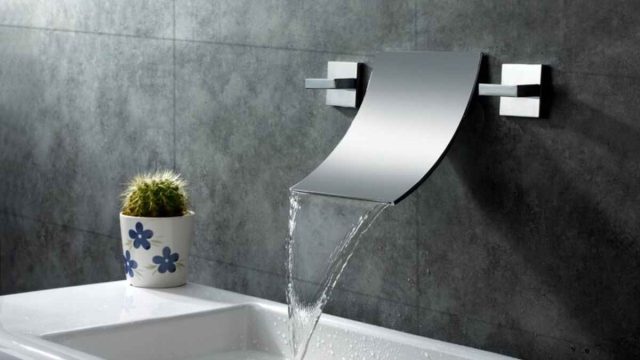Selecting a facet for a bathroom sink can be more challenging than a homeowner may first anticipate. Although many people love a specific look or aesthetic, it is also necessary to consider how the faucet will work with the sink, which handle type is most functional, and the faucet material. Homeowners replacing a faucet should consider what is already in the bathroom. Those completing a makeover or renovation will have a variety of options. Keep reading for how to match a faucet to a bathroom.
Types of Faucets. choosing a faucet for the bathroom
Contents
Homeowners replacing an old faucet must match the new faucet to the existing sink. Single-hole faucets combine the mixing handles and the spout into one unit needing only one hole. Homeowners choosing a faucet for the bathroom or powder room may want to consider single-hole faucets.
Center-set faucets fit three-hole sinks. These outer holes are four inches apart. Center-set faucets will have one lever or two handles on a six-inch plate. They are perfect for the majority of bathroom sinks.
Wall-mount faucets, along with vessel sinks, are becoming popular. They require longer spouts that go over the top of the sink bowl. Widespread mounts come with three separate pieces. They have two handles and a spout. The distance between the handles is usually eight inches. Minispreads are smaller versions designed for standard holes that are four inches apart.
Faucet Handle Types
Faucet handles give character to a faucet and determine how they operate. The handles control the hot and cold water lines and the water temperature. One handle faucets allow users to change the temperature and volume with just one hand by lifting and turning. With two handle faucets, each handle controls how much cold and hot water flows into the spout.
Types of Finishes
Faucets come in a wide array of finishes including brushed chrome, polished chrome, polished nickel, brushed nickel, stainless steel, oil-rubbed bronze, and more. It is best to focus on the look of the faucet rather than the material it is made from. Coordinate the finishes in the bathroom so that the towel bars, lights, and door hardware have the same finish. Brushed finishes hide water spots and fingerprints better, while polished finishes require more upkeep to stay sparkly.
Aerators
A faucet aerator is a screen on the end of the faucet that lets air into the water stream, making the water splash less. Some aerators restrict the water flow and therefore reduce water use. Most plumbers and manufacturers recommend that homeowners replace the aerator every few years to keep the water flowing well.
Motion-Activated Faucets
Hands-free faucets are becoming popular. These clever inventions include motion-activated on/off, flow control, and a temperature adjuster. These can be an excellent choice for families with small children or families who enjoy having the next high-tech invention. These faucets require a battery or electricity to function.
Laminar Flow Technology
Laminar flow faucets have aerators that add air to the water to make it flow more smoothly. The bubbles make the water stream look frothy. The water flows in a stream that won’t splash and feel very soft to the touch.
Sanitizing Faucets
For homeowners who want maximum sanitation, sanitizing faucets may be desirable. These ozone-activated antibacterial faucets shoot ozone into the water, killing germs. The manufacturer claims the ozone kills up to 99% of all bacteria, and the water is safe for drinking and washing.
There are many options when it comes to faucets. Homeowners should consider how they will use a bathroom and the aesthetic they want it to have. The perfect faucet is out there.


